Strategies
“Managers are responsible for the system.” — W. Edwards Deming
What strategies will best close the gap between the way it presently is and your desired future? Through team brainstorming, new, innovative ways of creating desired futures can be developed. The process requires you to get out all the ideas and then weed through them, leaving only the most essential.
“The 80/20 Rule: Eighty percent of the results come from twenty percent of the activity.”—Pareto’s Law
In most organizations 80 percent of the results are driven by 20 percent of the activities. Determining the most essential strategies means isolating the strategies in the 20 percent that will have the maximum impact. There will be a great commitment to success of your strategies if those who are going to carry out the plan are included in creating these strategies.
Disengagement Strategies
“Time is the scarcest resource and unless it is managed, nothing else can be managed.”—Peter F. Drucker
It is also important to consider disengagement strategies. Where are you spending time, money, and other resources that are not leading you effectively toward your aim? An attempt should be made to get rid of more strategies than you are taking on.
Single Best Measure/Primary Measure
In addition to the objectives in Key Result Areas, it is very valuable to have a single best measure of overall college effectiveness. How can you hit a target if you don’t know where it is? What is the single best, time-bound measure that indicates the quality with which your college is achieving its aim? Establishing this target provides focus and feedback to the college as to how well it is doing. This is the scoreboard and indicates how well your team is playing the game.
Feedback
A strategic plan that is created and then filed away has far less chance of success than one that is detailed on a chart, posted in plain sight, and the focal point of team meetings and planning sessions. Research demonstrates that goals without feedback do not increase motivation or performance. Any effective plan must continually answer the questions: “Where are we now in relation to the goal? What adjustments must be made? What innovative ideas have popped up?” Feedback keeps you on track and alerts you to new ways that may not have been obvious at the formation of your plan.
Pipelining
Central to the entire process is building commitment to the plan. Once the initial draft is developed, it should be given to the entire organization for additions and/or subtractions. Each member of the organization should be provided the opportunity to contribute by being accountable for driving strategies either as a team captain or a member.
Take Action
Commitment is the decision to act. A leader’s job is to gather commitments and then constantly monitor the gap between commitment and action. Accountability means that the responsibility for successful achievement of each strategy is given to one individual. What is everyone’s responsibility ends up being no one’s responsibility. The person charged with the accountability for a strategy may solicit help from others, form committees, or even delegate—but the accountability for the end result cannot be delegated.
Strategic Planning is a Continuous and Never-Ending Improvement Process
The strategic plan should be reviewed monthly for two reasons: First, things are changing too fast for you to set long-term strategic positions and then wait a year to see if they are still appropriate. Second, new, creative ideas will surface over time. Planning needs to leave room for the on-going creative process.
There is a delicate balance between performing and adding to performance capacity. Planning can be the most effective means of maintaining that balance. The process can result in long-term success and security for the college, a vibrant work environment for the administration and staff, a rich educational experience for the students, and well-trained workforce for the business community.
The Importance of developing a rhythm
Part of the key to long term success is developing a rhythm of following through on the planning process and a rhythm of doing the items decided upon in your Key Result Areas. You can’t start with just a rhythm, you first need to start with repetition then build from there.
1) REPETITION-The act or process or an instance of repeating or being repeated (a conscious level activity). We’ve all heard that repetition is the mother of learning. It typically takes a person 8 times of hearing (or seeing) something to remember it. Some people 16 times, some 24. Repetition is important in remembering something.
2) ROUTINE-A prescribed, detailed course of action to be followed regularly; a standard procedure (a subconscious level activity that is created from repetition). When something is repeated enough it can become a routine. For example, brushing your teeth is a routine you do every day. Once something becomes routine, it is easier for you to remember to do it.
3) RITUAL-A detailed method of procedure faithfully or regularly followed (usually involves emotion and a feeling of accomplishment and fulfillment evolving from routine). Some things that are routine can eventually become a ritual. For example, the family has dinner together every Sunday night. Not only do they eat together but they eat the same home made lasagna every Sunday. Eventually this can become a ritual that becomes a family tradition.
4) RHYTHM-Procedure or routine characterized by regularly recurring elements, activities, or factors (rhythm is also known as the flow or being in the zone). When you do something enough you can get very good at it and develop a rhythm. For example: When golfing you swing the club the same way every time. Eventually you get in the zone where swinging the club that way and hit the ball every time.
5) RESULTS-A favorable or concrete outcome or effect (a successful end result). When you get in a rhythm and are doing something the same way over and over you will get the same results.
6) REVIEW-To examine with an eye to quality or course correction (a time to evaluate what is working or not working and fess up and fix it so we can rebirth). It’s important to stop and access where you are at. If you are not moving in the right direction, it may be time to do it differently or develop a different plan of action.
7) REBIRTH-the revival of learning and culture (rebirthing creates new energy for new repetition, routine, ritual, rhythm and results). If you decide it’s time to develop a new plan of action it can cause excitement and help move toward a new plan.
Featured posts
May 16, 2023
May 16, 2023
May 16, 2023





